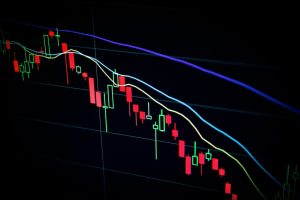Stochastics is a popular technical analysis tool used by forex traders to identify momentum in the market. This indicator is based on the premise that price tends to close near the high of an uptrend and near the low of a downtrend. The stochastic oscillator, which is the most commonly used form of stochastics, measures the momentum of price action by comparing the closing price of an asset to its price range over a given period. In this article, we will discuss how to use stochastics for momentum forex.
Understanding the Stochastic Oscillator
The stochastic oscillator consists of two lines, the %K and %D. The %K line represents the current closing price relative to the high and low of a given period. The %D line is a moving average of the %K line and is calculated using a three-period moving average. The %K line is more sensitive to price movements and tends to be more volatile, while the %D line is smoother and provides a more accurate representation of the momentum in the market.
The stochastic oscillator has a range of 0 to 100, with the oversold level at 20 and the overbought level at 80. When the %K line crosses above the %D line, it is considered a buy signal, and when it crosses below the %D line, it is considered a sell signal. However, traders should be careful not to rely solely on these signals, as they can sometimes be false.
Using Stochastics for Momentum Forex
Stochastics can be used in a variety of ways to identify momentum in the forex market. One of the most common methods is to use the indicator to identify overbought and oversold conditions. When the stochastic oscillator reaches the overbought level of 80, it suggests that the asset is overvalued and may be due for a correction. Conversely, when the oscillator reaches the oversold level of 20, it suggests that the asset is undervalued and may be due for a rebound.
Traders can use stochastics in conjunction with other technical indicators to confirm buy and sell signals. For example, if the stochastic oscillator indicates an oversold condition and the moving average convergence divergence (MACD) indicator shows a bullish crossover, it may be a strong buy signal. Similarly, if the stochastic oscillator indicates an overbought condition and the relative strength index (RSI) indicates a bearish divergence, it may be a strong sell signal.
Another way to use stochastics for momentum forex is to look for divergences between the indicator and the price action. A bullish divergence occurs when the price of an asset makes a lower low, but the stochastic oscillator makes a higher low. This suggests that the momentum is shifting in favor of the bulls and that a reversal may be imminent. Conversely, a bearish divergence occurs when the price of an asset makes a higher high, but the stochastic oscillator makes a lower high. This suggests that the momentum is shifting in favor of the bears and that a reversal may be imminent.
Conclusion
Stochastics is a powerful tool for identifying momentum in the forex market. By using this indicator, traders can identify overbought and oversold conditions, confirm buy and sell signals, and look for divergences between the indicator and the price action. However, traders should be careful not to rely solely on stochastics, as it can sometimes produce false signals. It is always best to use stochastics in conjunction with other technical indicators and to incorporate fundamental analysis into your trading strategy as well.





